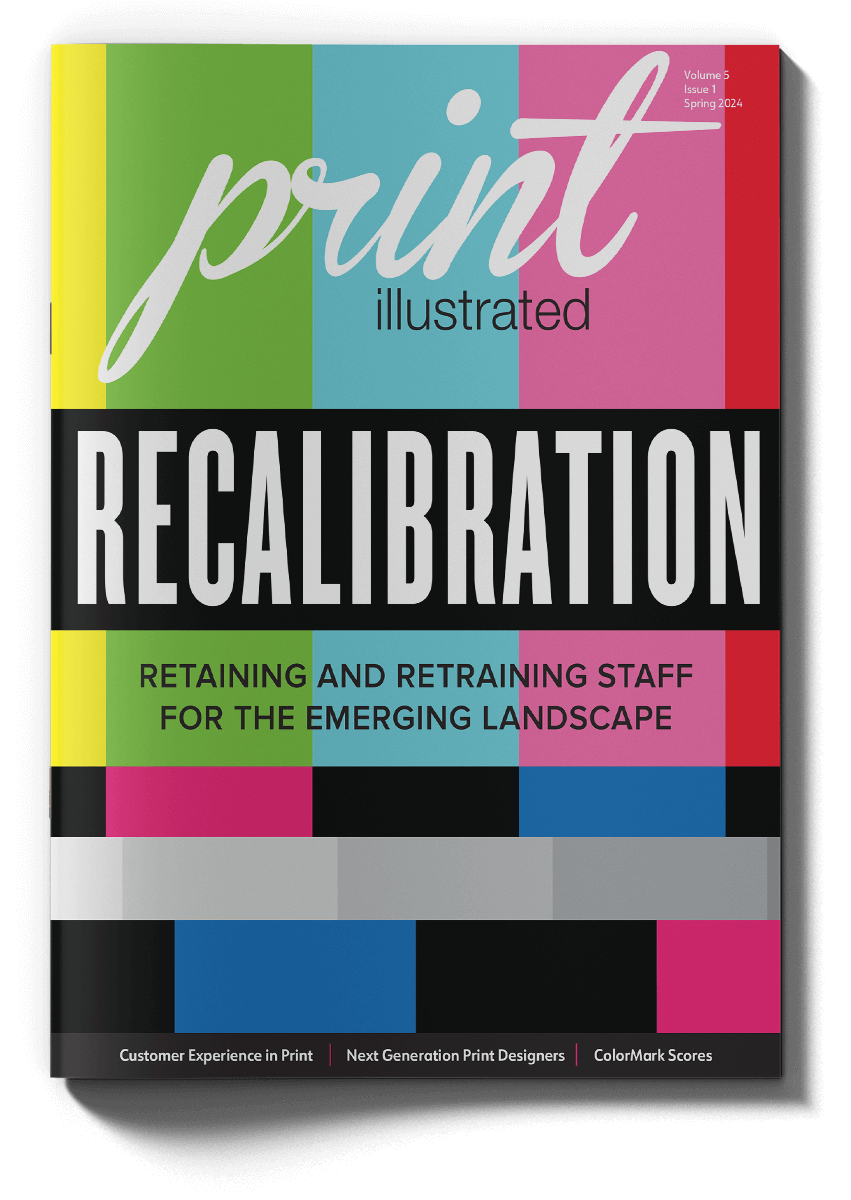Over the last 10 years or so, Allied Printing Company has made a concerted effort to focus on its brand, both internally and externally. Its internal focus centers on culture and morale. With just under 100 employees, the Ferndale, Michigan, printer has a family-like environment and culture—one that fosters a sense of loyalty and motivation among its team to perform for the company and its clients.
That strategy is working. Most employees on the Allied team have been with the printers for more than 10 years. And, even amid a time when recruiting new talent can be a daunting task for today’s printers, Allied has found success in not just hiring for the sake of hiring. “We focus on fit from the beginning,” says Elly Chichester, Chief Marketing Officer. “While it can be a challenge to ‘pass’ on a skilled candidate, the consequences of bringing on the wrong candidate can be a huge setback.”
In today’s post-pandemic landscape, the printing industry—along with others seeking skilled laborers—is seeing a shift in what candidates desire from employers. Between a continually dropping unemployment rate, more job openings, and the enticement of work-from-home and flexible hours, finding skilled machine operators can be tough.
“We use AI every day and for many purposes. I think the key to the future is buying technology that anyone can learn to operate efficiently in a few weeks.”
– Al Kennickle, President, The Kennickle Group
One of the saving graces continues to be opportunities related to automation-related positions, where technological advancements are giving workers reasons to learn new skills with operator interfaces. “This has required us to bridge the gap of moving from a more manual (operator-led) function to an automated (machine-led) function,” Chichester says. “This takes time and is a work in process. We find that many of the technology advances make equipment more intuitive for newer operators used to current technologies like touch screens. Over the last several years, we’ve been hyper-focused on training—whether it’s facilitated internally, driven by a vendor partner or led by an industry leader.”
The Allied approach relies on its leadership team to identify knowledge gaps and training opportunities. For example, its human resources manager actively researches available training options and programs. The printer also works with its vendor partners on training and retraining opportunities.
From an effectiveness standpoint, while face-to-face, in-person training has proven to be helpful for a large segment of the Allied staff, the online component continues to make educational opportunities available to a broader base of its employees. “The flexibility of online training also minimizes the operational interruptions we historically experienced when an entire department would effectively close for training for a day,” Chichester says.

Score one for automation
When it comes to finding the best strategies for bridging the workforce gaps that abound today, Al Kennickell may have settled on one of the most intriguing. Right now, the President of Savannah, Georgia-based The Kennickle Group is only purchasing equipment that is easy to operate.
For example, his automated approach to employee bandwidth includes having only two people who can run its 6-color 40-inch press and five who can operate its digital 4-color press. In addition, because The Kennickle Group is automating in the bindery department, there no longer is a need for craftsmen, just operators.
“Savannah has just landed the largest economic development project in Georgia history,” Kennickle says. “In the next five years, there will be a need for 19,000 new jobs. All businesses in the area are bracing for the road ahead. The minimum wage here will be $23 per hour.”
If there is one lesson Kennickle has learned of late, it is that today’s workers can see how the landscape is playing out. “They clearly see the direction we are moving technology-wise, so they know the ability to do many jobs makes them much more valuable than just being a great press operator. We try to create examples of people who started out low, but moved up. We also say that in order to become of real value you need to be proficient in a job outside of your department. Pressmen running stitchers, wide-format operators running digital presses, etc. We use AI every day and for many purposes. I think the key to the future is buying technology that anyone can learn to operate efficiently in a few weeks.”
“We’ve found that most of our employees are thirsty for education, and the company is happy to make that investment in our greatest resource.”
– Elly Chichester, Chief Marketing Officer, Allied Printing Company
According to the “2023 WEF Future of Jobs Report” by the World Economic Forum (WEF), since 2015, skill sets for jobs have changed by around 25%. By 2028, employers estimate that 44% of workers’ skills will be disrupted, WEF says. In addition, six in 10 workers will require training before 2027, which means printers must remain at the forefront of talent development in both immediate and long-term transformation plans.
In driving business transformation, the adoption of new technologies such as AI is becoming more of an opportunity. As AI and other technologies continue to emerge, professional development will play an even more prominent role. “We’ve found that most of our employees are thirsty for education, and the company is happy to make that investment in our greatest resource,” Chichester says. “We’ve looked for learning initiatives to up-train staff on new skills and new equipment, and they have also allowed us to bring in novice staff and train them on a particular skill set or piece of equipment.”
To prepare their workforces for the ever-evolving technological revolution, the need for printing companies to invest in training and professional development is critical. Encouraging your employees to take advantage of educational opportunities on all fronts will help provide them—and you—with the tools necessary to learn and grow.
Skills, skills, and more skills
The numbers can be alarming. According to Springboard for Business’ “State of the Workforce Skills Gap Report,” 70% of leaders say their businesses are suffering because their workforces lack the right competencies. Among the myriad factors, here are five technical skills leaders say their companies need right now:
Data analysis – 44%
Project management – 44%
AI/machine learning – 36%
Software engineering – 36%
Cybersecurity – 31%

